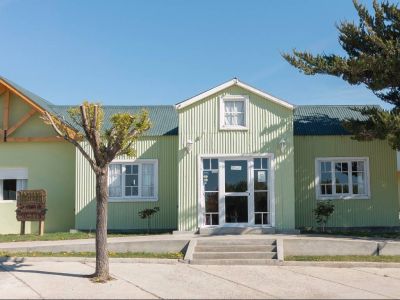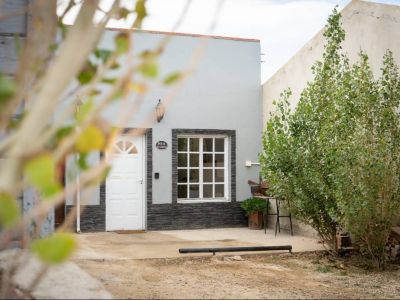
A stroll along the seafront, a visit to the cave paintings area and a view of the penguin reserve are but some of the activities available in this spot.
Eager to breathe in the sea breeze, we set out at
Puerto San Julián towards the north along undulating National Route 3. It was a sunny but cool afternoon. The seashore revealed beautiful beaches guarded by huge cliffs in a harmonious encounter of sea and land. We were dazzled by the beach known as
Los Caracoles (The Seashells), due to the great number of valves that land naturally on these shores. Some 15 kilometers away, we found Punta Caldera and Cabo Curioso, ample beaches highly appreciated in the summer by the denizens of San Julián. This is a shelter for a lighthouse and a colony of red-legged cormorants. All along this natural balcony onto the sea, we found the place known as
La Lobería (the sea lion colony), an attractive cliff and sea lion colony for lovers of sea fauna. Nautical sports and fishing enthusiasts have their favorite site at La Mina Beach, where a coal mine used to operate in the past. During this tour we also saw Drake and
Garganta del Diablo (Devil's Throat) Beaches. Once back at Puerto San Julián, we learned about a mini hiking tour along the coast which took about two hours to the same area which would let us watch the sea fauna.

Another interesting tour worth taking leads to a spot lying 150 kilometers away from Puerto San Julián. It is an archeological site known as La María, which reveals the incredible geologic revolutions endured by Patagonia in the past. This is a scene of deep ravines, high plateaus and rocky formations with volcanic sediments that offer a wide range of singular textures and color. There are 84 caves and overhangs that treasure testimonies of cave paintings made by the Casapedrense culture 12,600 years ago. These drawings feature human figures, hands, felines and other abstract imprints showing hunting scenes in red, yellow, white and black. They are located inside
estancia La María and visitors may spend the night at the venue, whether at the lodge which includes meals or at a camping site.

We chose another must visit, this time following the coast southwards along National Route 3. After 15 kilometers, we accessed Península San Julián Provincial Reserve, an important colony sheltering Magellanic penguins, cormorants, rheas, foxes, piches and guanacos. Created in 1986, its purpose is to preserve the fauna and the natural environments and reintroduce local species into their various habitats. Tourist visits are made in an orderly fashion and there is a very interesting fishing area. Having seen and learned so many things, we went to the Sea Art and Regional Museum. Inaugurated in 1972, ts aim is to preserve the heritage of the city and to rescue highly valuable petrified anthropological and archeological pieces. It works inside a house that features Magellanic style, built in the 1930s. Visitors may see the remains of the Spanish settlement called Nueva Colonia Floridablanca, the Pioneer's Room -containing memories from the early years of the district- and Luisa Gimata Room -showing objects made by the natives.

In a relatively short time, we could gather images of the natural beauty and priceless life anecdotes of Puerto San Julián.













